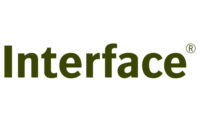ASID Releases Research Study on Impact of Design in the Workplace

Washington D.C. -- The American Society of Interior Designers (ASID) completed a full spectrum of pre- and post-occupancy research on its new Washington, D.C. headquarters. The research shows how workplace design positively influences health, wellness, employee satisfaction, and work performance.
“We’re proud to share all aspects of this journey with the design community and the world at large,” said Randy Fiser, ASID CEO. “The overall design of this space was driven by the research and data collected during pre-occupancy and its success is demonstrated through the post-occupancy data. ASID is committed to sharing updated evaluations as we continue to enhance our employee experience and improve workplace utilization.”
In partnership with Cornell University, Delos, and the Innovative Workplace Institute, ASID researched the impact of innovative workplace design on behavior and performance, how spatial design supports organizational goals, and the impact of design on human, organization, and environment sustainability.
Research was conducted through a series of in-depth interviews and employee surveys, sociometric data culled from badges worn voluntarily by employees, and environmental metrics from the building and measured within the office. The research projects each examined the role of workplace design and its impact on the employees and their work.
Research highlights include: improvements to environmental quality, environmental satisfaction, employee health and wellness, employee retention, employee performance, and resource efficiency; office design shaping the social environment to boost employee performance and productivity; and demonstrating office design--the office culture supports the messages communicated through the design--results in cost savings.
In May 2016, ASID moved into its new corporate headquarters, designed by Perkins+Will, a living laboratory for the design community. The new 8,500 sq ft office is the first space in the world to achieve both Platinum Level Certification for the WELL Building Standard (WELL) under WELL v1 and Leadership in Energy and Environmental Design (LEED), under the LEED ID+C rating system – the highest recognition awarded by the U.S. Green Building Council (USGBC) and the International WELL Building Institute (IWBI). The office space incorporates the most innovative health and wellness design features, and has sustainability as a central philosophy. This research was funded in part by the generous support of the ASID Foundation.
For more information, visit www.asid.org.
Looking for a reprint of this article?
From high-res PDFs to custom plaques, order your copy today!





